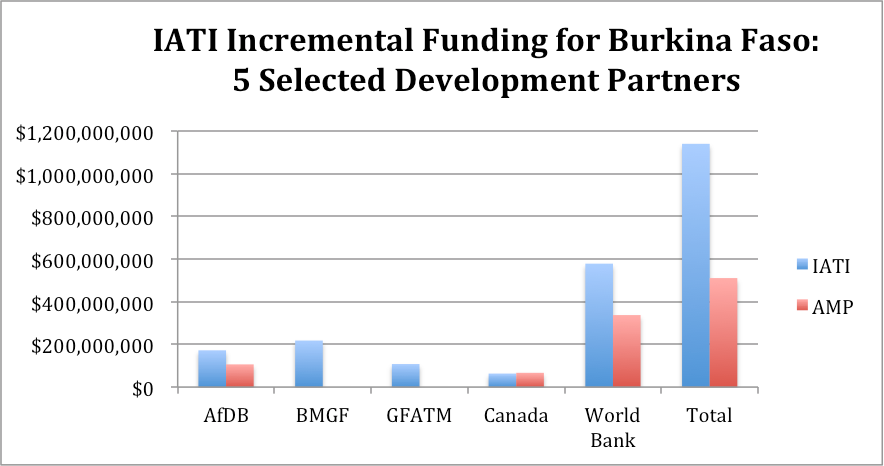IATI and Country Systems: DG Working Paper
This blog post introduces a new DG working paper on the use of IATI data in country Aid Information Management Systems (AIMS). The working paper aims to help inform discussions at the IATI TAG and Steering Committee Meetings, to be held in Ottawa from May 30-June 2.
Télécharger la version française du manuel “Utilisation de IITA dans les systèmes nationaux” ici.
Since its launch following the 2008 High Level Forum in Accra, the International Aid Transparency Initiative (IATI) has followed a strong growth trajectory. As IATI continues to mature, with data from more than 300 individual publishers – including many of the largest funders for individual partner countries – the IATI community’s attention has increasingly focused on how these data can be used, particularly by partner country governments in their Aid Information Management Systems (AIMS). To help facilitate uptake in country systems, detailed analyses of the usefulness of IATI data from a government perspective are needed to inform future evolution of the IATI standard and to derive the full benefits of the initiative in terms of information timeliness, data quality, and lower transaction costs. To fill this gap, DG is halfway through a year-long program – supported by the French Ministry of Foreign Affairs and International Development – to create sustainable integrations of IATI data in 5 Aid Management Program (AMP) countries (Burkina Faso, Chad, Cote d’Ivoire, Madagascar, and Senegal).
During the past several months, we have performed a rigorous analysis of IATI data quality, resulting in the selection of 5 IATI publishers to be imported into country systems. Typically, this import resulted in additions of hundreds of millions of dollars of additional aid flow data, which were previously “blind spots” for partner country governments. The chart below illustrates how IATI data integration for 5 selected publishers expands the coverage of Burkina Faso’s AMP by over US$600,000 during the period from 2012-2014. This expanded coverage clearly illustrates the opportunity for IATI to make a significant contribution to resource management and development coordination, while maintaining strong domestic ownership of country systems. Additional benefits for government AIMS users could in the form of time saved, especially as data quality improve and additional development partners (DPs) can have their reporting moved from manual to automated (IATI) processes.

However, for this potential to be realized, several enhancements to both the IATI standard and existing IATI data quality must be made. Many of these enhancements are discussed in this working paper, with further suggestions to be made in a second paper following the in-country implementation phase of this program.
The methodology used in analyzing data for “appropriate fit” in country systems included the following steps:
- Step 1: Identification of key fields for country use
- Step 2: Comparison of aggregate financials in IATI and AMP
- Step 3: Assessment of data completion in priority fields
- Step 4: Assessment of reporting timeliness and frequency
- Step 5: Selection of IATI publishers for import into country systems
Suggested enhancements to the IATI standard include:
- Inclusion of an on/off budget indicator field in the standard
- Possible inclusion of National Planning Objectives field in the standard
- Inclusion of sub-sector field in the standard
- Mandatory use of OECD DAC sector codes
- Mandatory publication in local language of recipient country
Priority improvements to publisher data quality
- Focus on high quality data in a subset of priority fields for country use (see Table 1 in report)
- Prioritize transaction data quality
- Publish data in a timely (at least quarterly) manner
- Include sub-national data according to current (2.01) standard
It should also be noted that many potential IATI users in partner country governments may struggle to use IATI XML in analyzing data prior to import. With this ease of use in mind, DG is also developing an open-source IATI-AIMS Import Tool, which will be launched in mid-June. The tool is described in greater detail in Annex 2 of the working paper.
As we enter the second phase of this program, with country implementations scheduled from June-October, we welcome input from the IATI community on (i) how we can improve our program, (ii) practical constraints to implementing the recommendations we propose, and (iii) next steps for ensuring that Open Data can have a true impact for governments and citizens alike.
Stay tuned for additional updates.
Share This Post
Related from our library

Introducing The HackCorruption Civic Tech Tools Repository
Introducing the Civic Tech Tools Repository: an open-source hub of digital solutions to fight corruption. Designed for growth through GitHub contributions, it brings together tools, code, and resources across six key areas for HackCorruption teams and beyond.

Building a Sustainable Cashew Sector in West Africa Through Data and Collaboration
Cashew-IN project came to an end in August 2024 after four years of working with government agencies, producers, traders, processors, and development partners in the five implementing countries to co-create an online tool aimed to inform, support, promote, and strengthen Africa’s cashew industry. This blog outlines some of the key project highlights, including some of the challenges we faced, lessons learned, success stories, and identified opportunities for a more competitive cashew sector in West Africa.

Digital Transformation for Public Value: Development Gateway’s Insights from Agriculture & Open Contracting
In today’s fast-evolving world, governments and public organizations are under more pressure than ever before to deliver efficient, transparent services that align with public expectations. In this blog, we delve into the key concepts behind digital transformation and how it can enhance public value by promoting transparency, informing policy, and supporting evidence-based decision-making.